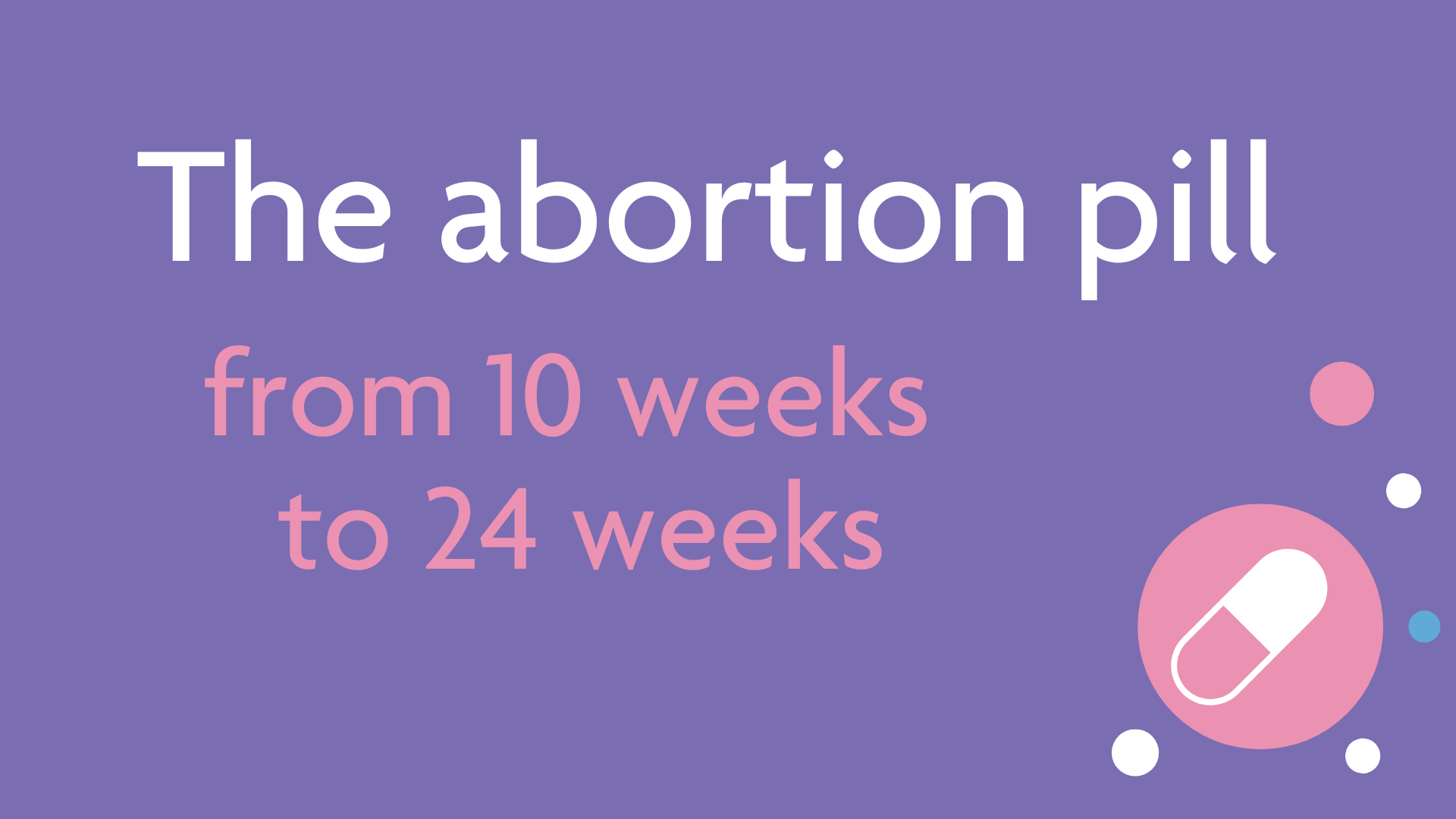Please note, we are currently not offering this treatment type.

The abortion pill is a medicine that ends the pregnancy. The medical name for the abortion pill is mifepristone. It works by blocking the hormone progesterone. Without progesterone, the lining of the uterus breaks down and the pregnancy cannot continue.
The abortion pill is followed by another medicine called misoprostol, which makes the womb contract, causing cramping and bleeding similar to a miscarriage.
This method can be used up to 24 weeks of pregnancy.
Once you have checked in with the receptionist, your name and date of birth will be checked and you will be asked to go into a waiting room. A nurse will collect you and ask if you would like your support person to accompany you through this stage. The nurse will make sure that all your paperwork is complete and accurate. Your medical history will be confirmed.
You will be given a tablet of mifepristone to swallow. Mifepristone makes the uterus more sensitive to a medication called misoprostol, which is used to induce contractions (start labour).
You will go home and return to a clinic for the rest of your treatment on a different day. Contact us if you vomit within 1 hour of taking the pill.
If you are 22 weeks pregnant or more, it is necessary to administer an injection into your abdomen to stop the fetal heartbeat before the abortion takes place. This is called ‘feticide’ and more detail can be found here. If you are rhesus-negative you will also have an anti-D injection.
You will attend a BPAS clinic 1-2 days after you swallow mifepristone. You will be admitted to the clinic and misoprostol will be administered either vaginally or under your tongue, every few hours until all the fetus and placenta are passed. You will be awake throughout the process, but will be given oral and injectable painkillers as needed and can use gas and air. The nurse or midwife looking after you will try to make the process as comfortable as possible.
On average it takes about 6 hours for the labour and delivery, but this can vary. In some cases, it may be quicker, but in others it may take over 24 hours and you will need to stay overnight in the clinic. In a minority of procedures, the placenta does not pass spontaneously, and it is necessary to perform an additional procedure, usually under general anaesthetic, to remove it.
You may see large blood clots or the fetus at the time of the abortion. The nurse or midwife will try to make sure that you see very little, but sometimes this is not possible as events can be rapid.
It is normal to have some light bleeding or spotting for up to 4 weeks after the abortion. Using sanitary pads make it easier to keep track of your bleeding.
For most women, medical abortion is like a miscarriage. It is normal for you to have bleeding and cramping. You might also:
- feel dizzy
- feel nauseous or have to vomit
- have a headache
- have diarrhoea
- have temporary flushes or sweats
A nurse will be with you at all times and will give you medicine to help control any side effects or pain you might have.
Significant, unavoidable or frequently occurring risks
These are usually easy to treat and rarely have any long-term health effects.
- Unpredictable time to complete the procedure
- Side effects of drugs such as nausea, vomiting, diarrhoea, headache, dizziness, fever/chills (common)
- Retained placenta (1 in 60)
- Infection (none reported to BPAS in 2013 but may be up to 1 in 400)
- Unpredictable, irregular or prolonged bleeding after the abortion (variable)
- Pain during the procedure (common)
These may require transfer to hospital or surgical procedures and may have serious long-term health effects.
- Psychological problems (variable)
- Continuing pregnancy/failure to deliver (1 in 150)
- Haemorrhage – very heavy bleeding (1 in 200)
- Rupture of the uterus/womb (1 in 1,000)
Extra procedures that may be necessary
- Surgical abortion or uterine aspiration
- Blood transfusion
- Laparoscopy or laparotomy – operation to look inside the abdomen
- Hysterectomy – surgical removal of the womb (2 in 100,000)
Death is very rarely linked to abortion treatment – less than 1 in 100,000 for all abortions.
